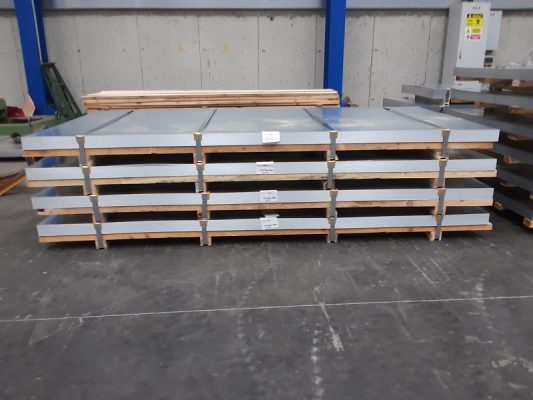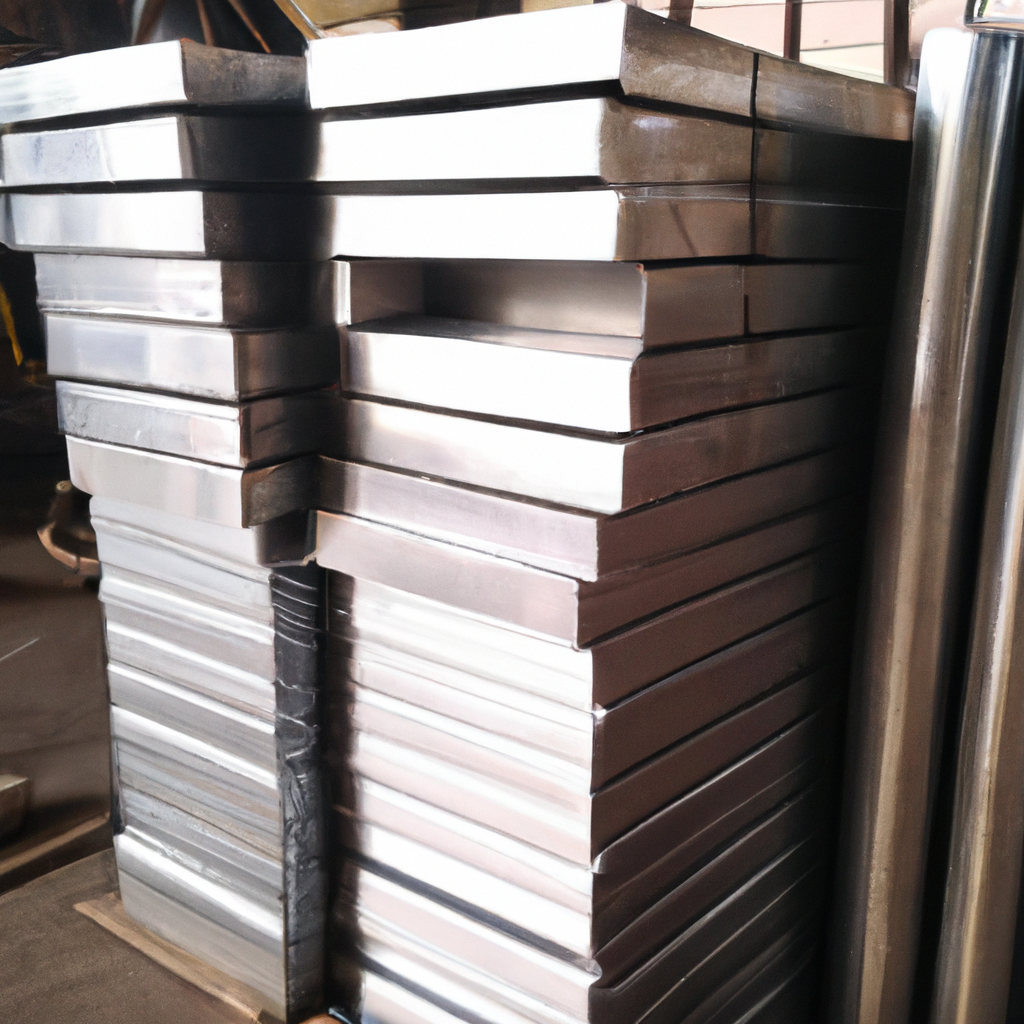“Discover the Strength of Steel: Galvanized steel and Stainless steel !”
Introduction
galvanized steel and stainless steel are two of the most commonly used materials in the construction industry. Both materials have their own unique properties and advantages, but there are also some key differences between them. In this article, we will discuss the differences between galvanized steel and stainless steel, including their composition, properties, and applications. We will also discuss the advantages and disadvantages of each material. By the end of this article, you should have a better understanding of the differences between galvanized steel and stainless steel.
Exploring the Pros and Cons of Galvanized Steel and Stainless Steel
Galvanized steel and stainless steel are two popular materials used in a variety of applications. Both materials offer advantages and disadvantages, and it is important to understand the differences between them before making a decision.
One of the main advantages of galvanized steel is its low cost. It is much less expensive than stainless steel, making it a popular choice for many applications. Additionally, galvanized steel is highly durable and resistant to corrosion, making it a great choice for outdoor applications.
However, galvanized steel is not as strong as stainless steel and is not suitable for applications that require high strength. Additionally, galvanized steel is not as resistant to heat as stainless steel, making it unsuitable for applications that require high temperatures.
Stainless steel is much more expensive than galvanized steel, but it offers several advantages. It is much stronger than galvanized steel and is suitable for applications that require high strength. Additionally, stainless steel is highly resistant to corrosion and heat, making it a great choice for applications that require high temperatures.

However, stainless steel is not as durable as galvanized steel and is more prone to scratches and dents. Additionally, stainless steel is more difficult to work with than galvanized steel, making it more expensive to fabricate.
In conclusion, both galvanized steel and stainless steel offer advantages and disadvantages. It is important to consider the specific application before making a decision. Galvanized steel is less expensive and more durable, but it is not as strong or heat resistant as stainless steel. Stainless steel is more expensive and stronger, but it is more prone to scratches and dents and is more difficult to work with.
Comparing the Corrosion Resistance of Galvanized Steel and Stainless Steel
The corrosion resistance of steel is an important factor to consider when selecting a material for a particular application. Galvanized steel and stainless steel are two popular types of steel that are frequently used in a variety of applications. While both materials offer excellent corrosion resistance, there are some key differences between the two that should be taken into account when making a selection.
Galvanized steel is steel that has been coated with a layer of zinc. This layer of zinc helps to protect the underlying steel from corrosion. The zinc layer acts as a barrier, preventing oxygen and water from reaching the steel and causing corrosion. Galvanized steel is often used in outdoor applications, such as fencing, where it is exposed to the elements.
Stainless steel is a type of steel that contains at least 10.5% chromium. This chromium content gives stainless steel its corrosion resistance. The chromium forms a thin layer of chromium oxide on the surface of the steel, which prevents oxygen and water from reaching the steel and causing corrosion. Stainless steel is often used in applications where it is exposed to corrosive chemicals or high temperatures.
When comparing the corrosion resistance of galvanized steel and stainless steel, it is important to consider the environment in which the material will be used. Galvanized steel is more resistant to corrosion in outdoor environments, while stainless steel is more resistant to corrosion in high-temperature and chemical environments. Additionally, galvanized steel is more cost-effective than stainless steel, making it a better choice for applications where cost is a major factor.
In conclusion, both galvanized steel and stainless steel offer excellent corrosion resistance. However, the environment in which the material will be used should be taken into account when making a selection. Galvanized steel is more cost-effective and better suited for outdoor applications, while stainless steel is more resistant to corrosion in high-temperature and chemical environments.
Examining the Cost Differences Between Galvanized Steel and Stainless Steel
The cost of galvanized steel and stainless steel can vary greatly depending on the type of metal used and the application for which it is being used. In general, galvanized steel is less expensive than stainless steel, but it is also more prone to corrosion and rust.
Galvanized steel is a type of steel that has been coated with a layer of zinc to protect it from corrosion and rust. This layer of zinc helps to prevent the steel from rusting and corroding, making it a popular choice for outdoor applications. Galvanized steel is typically less expensive than stainless steel, but it is also more prone to corrosion and rust.
Stainless steel is a type of steel that contains chromium, which helps to prevent corrosion and rust. Stainless steel is more expensive than galvanized steel, but it is also more resistant to corrosion and rust. Stainless steel is often used in applications where corrosion and rust are a concern, such as in food processing and medical equipment.
When deciding between galvanized steel and stainless steel, it is important to consider the application for which the metal will be used. If the application requires a metal that is resistant to corrosion and rust, then stainless steel may be the better choice. However, if the application does not require a metal that is resistant to corrosion and rust, then galvanized steel may be the more cost-effective option.
Understanding the Different Manufacturing Processes of Galvanized Steel and Stainless Steel
Galvanized steel and stainless steel are two of the most commonly used materials in manufacturing. Both materials have unique properties that make them ideal for different applications. Understanding the differences between galvanized steel and stainless steel can help you make the best choice for your project.
Galvanized steel is steel that has been coated with a layer of zinc. This layer of zinc helps protect the steel from corrosion and rust. Galvanized steel is often used in outdoor applications, such as fencing, roofing, and siding. It is also used in the automotive industry for parts such as exhaust systems and fuel tanks.
Stainless steel is a type of steel that contains at least 10.5% chromium. This chromium helps to create a protective layer on the surface of the steel, which helps to prevent corrosion and rust. Stainless steel is often used in applications where corrosion resistance is important, such as in medical equipment, kitchen appliances, and food processing equipment.
The manufacturing process for galvanized steel and stainless steel is different. Galvanized steel is created by dipping the steel into a bath of molten zinc. This process helps to create a strong bond between the zinc and the steel, which helps to protect the steel from corrosion and rust.
Stainless steel is created by adding chromium to the steel during the manufacturing process. This helps to create a protective layer on the surface of the steel, which helps to prevent corrosion and rust.
Both galvanized steel and stainless steel are strong and durable materials that can be used in a variety of applications. Understanding the differences between the two materials can help you make the best choice for your project.
Investigating the Durability of Galvanized Steel and Stainless Steel in Different Environments
Galvanized steel and stainless steel are two of the most popular materials used in construction and manufacturing. Both materials are known for their durability and strength, but how do they compare when exposed to different environments? This article will investigate the durability of galvanized steel and stainless steel in different environments.
Galvanized steel is a type of steel that has been coated with a layer of zinc. This layer of zinc helps to protect the steel from corrosion and rust. Galvanized steel is often used in outdoor applications, such as fencing, roofing, and other structures that are exposed to the elements.
Stainless steel is a type of steel that contains chromium, which helps to protect the steel from corrosion and rust. Stainless steel is often used in indoor applications, such as kitchen appliances and medical equipment.
When exposed to wet environments, galvanized steel is more durable than stainless steel. The zinc coating on galvanized steel helps to protect it from corrosion and rust, while the chromium in stainless steel is not as effective in wet environments.
In dry environments, stainless steel is more durable than galvanized steel. The chromium in stainless steel helps to protect it from corrosion and rust, while the zinc coating on galvanized steel is not as effective in dry environments.
When exposed to extreme temperatures, both galvanized steel and stainless steel are durable. The zinc coating on galvanized steel helps to protect it from corrosion and rust, while the chromium in stainless steel helps to protect it from extreme temperatures.
In conclusion, galvanized steel and stainless steel are both durable materials that can be used in a variety of applications. However, their durability varies depending on the environment they are exposed to. In wet environments, galvanized steel is more durable than stainless steel, while in dry environments, stainless steel is more durable than galvanized steel. In extreme temperatures, both materials are durable.
